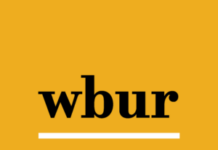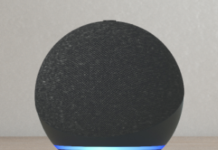
In every 2017 issue of Radio Ink we’ll be spotlighting companies that are generating real digital revenue for radio stations across the country. Gary Rozynek spent 33 years in radio, the first 15 working for large public companies and the last 18 with Jeff Warshaw in the first iteration of Connoisseur, back in the ’90s. He hung another shingle at Maverick Media, built it up to about 25 or 30 stations, and sold in 2013. Then he became interested in digital, especially when he started to notice the billions and billions of dollars shifting from traditional media. In 2014, Rozynek helped launch Vici Media.
The company teaches broadcasters everything they need to know to help their radio clients succeed using digital, helping them compete successfully against digitalonly sellers — and helping stations increase their overall revenue by tapping into digital, the one revenue category that continues to grow by double digits year after year.
RI: When a company calls, what will you teach them to do?
Rozynek: First of all, our strategy is to partner with these folks, and we bring the whole digital back end to their operations, to their markets. We have nine products. We do retargeting, targeted display, and video products, SEO, keyword targeting, behavioral targeting — we put together 80 ad networks.
There’s a new technology that’s come to market in the last few years called IP targeting. We can match a list of names and addresses to an IP address, and then we can reach the consumer at the Web entry point at their home. We also work with Facebook and Instagram; we do display and video in the newsfeed. We do Facebook retargeting. We do location-based targeting to cellphones, mobile conquesting. We do video pre-roll, both 15 and 30 seconds.
The targeting is more efficient. It’s far more precise because, again, you can pick out specific ZIP codes in a market, or you can pick out a five- or six- or seven-mile radius and the client can say, “I’m targeting this consumer profile: demographics 25-54; psychographics household income, married, two kids, two cars” — you can get granular with the type of profile you’re targeting. And that’s where the targeting is done within the specified radius.
Radio Ink: You’re teaching the radio sellers all of this.
Rozynek: What we’re going to do is work with the team over the course of 12 months, ongoing education. We’re going to help you in an uncontested market space and, over the course of time, make all of your media competitors less relevant. We actually provide the strategies, tactics, methods, and approaches to create that value, and over the course of time, completely change the selling culture. These solutions really help them tap into a stream of online revenue, growing at 15 percent annually. It enables their people to go out and create and capture new demand, because the demand for spot radio in the United States is very low. You have a different stream of revenue that you can silo. It’s a new channel, $70 billion and growing. It’s robust.
RI: Can you us a specific example of one of your successes?
Rozynek: I’m not going to mention the names of the companies, but I am going to mention specific markets around the country. We work with a longtime broadcaster in the Northeast, with five stations in several markets. For seven years in a row, there was no revenue growth. Like many broadcasters, a lot of people are managing their business on the expense side because the industry is not experiencing any kind of growth.
We got with this broadcaster in 2014, and he said, “I’m interested in partnering with you for digital solutions. We haven’t grown our revenue in seven years.” We did the training in the back half of the year, and in 2015 this broadcaster was up about 5 or 6 percent.
For the first time in a very long time, he started to manage his business differently, where he was actually investing to support digital. Getting a graphic designer, putting up another company website, extensive training — the training became like a year-round thing. He not only grew his top line in mid-single-digits, but the cash flow was up. The same thing happened in 2016. This particular broadcaster is now doing about 10 percent of his gross revenue with digital.
RI: Does the radio industry understand it needs to be this deep in digital?
Rozynek: The effort in the radio industry has definitely improved. People are trying things. There are a lot of guys in our space out there offering some type of digital solution. I still see a lot of broadcasters who view digital as a distraction; their view is that in the next five years, they just don’t see it continuing. They make a conscious decision to just focus on local spots and focus on trying to capture share. But the end game to that is not good.
If you look at every forecaster out there, they basically say the next five years for radio is flat to maybe plus one. I was in radio for 33 years. I love radio. We’re doing this because we think this is something that can create value. We think radio is a great business. Of all the traditional mediums, it has shown its resiliency. It’s still hanging in there. It works — reach and frequency definitely works as a medium. But a lot of these radio folks have to evolve. Clients today are savvy, they’re looking for marketing services and solutions. It’s got to be something different.
RI: If you had the 40 Most Powerful People in Radio in a room to speak to them about developing a digital strategy, what would you tell them?
Rozynek: Look at the media landscape today. Technology has disrupted the traditional media sector and changed the way consumers consume. In the last five years, the amount of time adults 18+ are spending online has gone from three hours per day to six hours per day. There is a captive audience available for your customers to connect, engage, and monetize online. The online spend has gone from $10 billion in 2004 to over $70 billion in 2016. That trajectory will continue through 2020.
The first step is to recognize the opportunity. Go where the ad money is shifting to. The kinds of solutions being offered by radio have to expand and evolve. Advertisers want transparency and accountability and want to be able to calculate ROI.
That has always been a hurdle and point of debate when it comes to radio. We know that radio is a powerful medium and that its strengths are reach and frequency and the ability to activate the “call to action” in the mind of the consumer. In combination with online solutions that enable an advertiser to target their ideal customer one-to-one online and within a specific geography, it is a much more powerful solution and helps your sales teams change the conversation with their customers.
Advertisers want consumer scale, and an online solution brings them that. The ability to be seen on large, national publishers, where their display or video ads can be seen by a lot of eyeballs, is very compelling. Your advertisers are less interested in being seen on radio stations’ local sites because there is not enough traffic to those sites.
Once you recognize the opportunity, you have to commit to educating your sales management and sales team. This is no different from teaching salespeople how to sell radio on-air campaigns or events. You need to decide what digital products and solutions you will offer to your clients and how the solutions will be positioned with your existing and new potential clients.
Once you have decided what the product line looks like and how it complements radio, you have to recruit a digital sales manager who either is or can become a subject-matter expert and help support, teach, and coach the sales force on creating the right marketing solutions for the customers.
Standards of performance should also be developed to set expectations and keep the sales team focused on the opportunity to not only retain and grow current customers, but to close more target business in and out of the market. The management team must remain patient, because this sales strategy takes time to unfold, but the rewards are many. Working a disciplined process and having a different kind of conversation with the clients creates deeper and more meaningful relationships. Selling integrated solutions both on air and online delivers better results, and, because of the reporting and the analytics the clients get, the campaigns are more transparent. They can actually calculate the ROI on the marketing dollars they spend.
The goal is to evolve into a marketing services and solutions provider. To become your clients’ best marketing partner — that is what clients want. The majority do not want to buy a “package.” This strategy requires a commitment from ownership, market management, and the sales team to unlock the enormous value that can be harvested as the media landscape continues to change and competition remains high in every market in America.
Contact Gary Rozynek at 203.227.2800 or [email protected].









Is anyone teaching anyone that pre-rolls are an extreme annoyance to the consumer? I have an app that, when somebody calls me or an alarm goes off, the audio stream must be restarted and you get to sit through the pre-roll again, often the same one.
Wonderfui product. Great training. No margin. The digital landscape is becoming a dive to the bottom. All of our media brethren selling the same thing – behavioral, retargeting, GEO fencing, etc. – and there is little margin in most of it.
The training is invaluable – no question. But clients are savvy and look for the best deal. And to our experience, most of our digital clients DON’T buy radio…or have cannibalized radio dollars for digital, so we end up with the same dollars but much less margin. What we need is a compelling unique local content that is not part of the exchange or a network and is reasonably priced. Still looking….:)
Did you work with Gary And his group?
Or are you referring to the landscape in general?